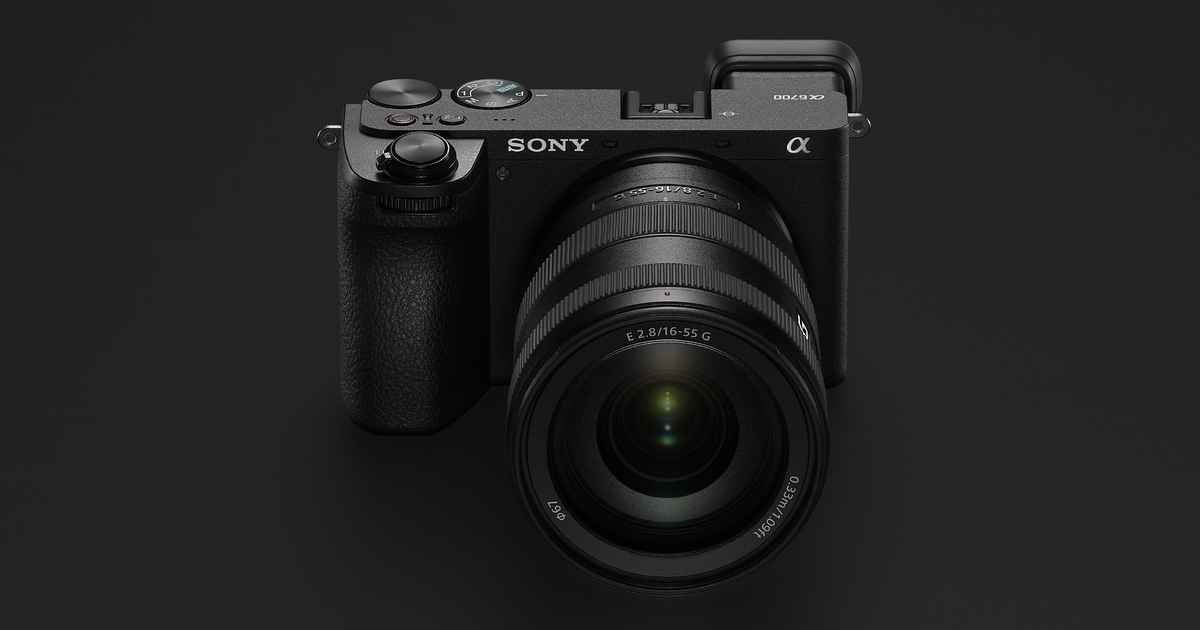The new Sony A6700 © Sony
Praised by beginners, amateurs or experienced photographers looking for a second more compact and versatile body, hybrid cameras are on a pivotal niche for manufacturers. Launched in 2019, the Sony Alpha A6600 now sees its replacement, the A6700. Faster, more efficient and more versatile, the Alpha 6700 does not hesitate to display its technological advances to carve out a place for itself within the range of the Japanese manufacturer.
Sony Alpha 6700 (A6700)
In the absence of offers discover
The links shown above may not work in the presence of an ad blocker.
A new better defined sensor
Unsurprisingly, the first update concerns the device’s APS-C sensor. Sony has decided to implement a new backlit model of 26 megapixels, against 24 Mpx on the A6600. Naturally, this new sensor is stabilized on five axes. This is the sensor built into the FX30 camera.
In addition, this new sensor is associated with a Bionz XR image processing processor, more recent than the Bionz X which fitted its predecessor. Without any real revolution, the definition of this sensor is nevertheless down compared to the recent Fujifilm X-T5 or Canon EOS R7 which point to 40 and 32.5 megapixels respectively. But progress is to be found elsewhere.
AI-boosted autofocus
To meet certain sporting claims, Sony’s new APS-C body gains a phase correlation autofocus module of 759 points against 425 previously. In addition to the Bionz XR processor, the Japanese adds a chip dedicated to artificial intelligence calculations. This combination aims to improve the accuracy and velocity of the whole, especially for the recognition of subjects. The new model is thus able to discern the eyes, the head or the body of the subject but also to recognize vehicles such as cars, trains, planes and insects.
More concessions
Unfortunately, Sony’s latest release might not satisfy all photographers due to a few technical limitations. First, the viewfinder has a definition below market standards. Its Oled screen of only 2.36 million points remains similar to that present on its predecessor, accepting a refresh rate of up to 120 Hz. With an improved autofocus, we could expect a progression of the burst, but it is not so. The small Sony box remains stuck at 11 frames per second, which today sounds like an anachronism, especially since the competition often advances with 20 or 30 fps. In addition, in raw+jpeg, the buffer is capped at 44 images…
The Sony A6700 has a swivel and touch screen. © Sony
Finally, on the video side, we again regret that the Sony device does not offer a capture greater than 4K, and still has a slight 1.04x crop. A little light when the direct competition does not crop in 4K (Canon EOS R7) or allows filming in 6K for the Fuji X-T5. To increase the rate to 120 fps, you will have to settle for a crop x1.6. The 240 fps slow motion mode, in Full HD, operates a 1.6x crop. On an APS-C sensor, this begins to seriously crop into the surface and it will be necessary to ensure that the lenses are wide enough not to interfere with the intentions of the videographer.
Price and availability
Sony offers its new case as a kit or alone. Buyers will have the choice between a very compact 16-50mm F/3.5-5.6 transtandard zoom, for 1800 €, or an 18-135mm F/3.5-5.6 for 2100 €. The box alone is 1700 €. For their part, the Canon EOS R7 and Fujifilm X-T5 are displayed, in July 2023, at respectively 1600 and 1860 € naked.
The Sony A6700 incorporates a new 26-megapixel back-illuminated sensor. © Sony
